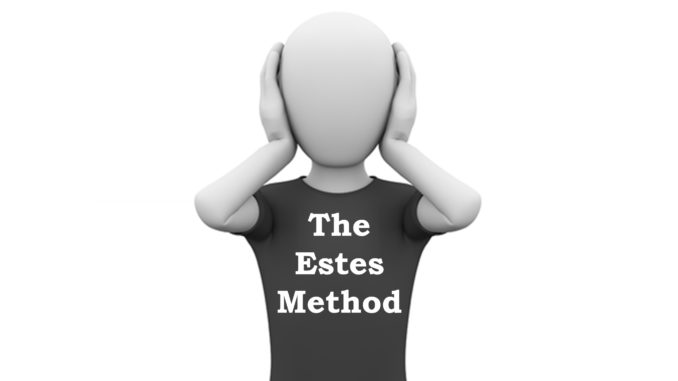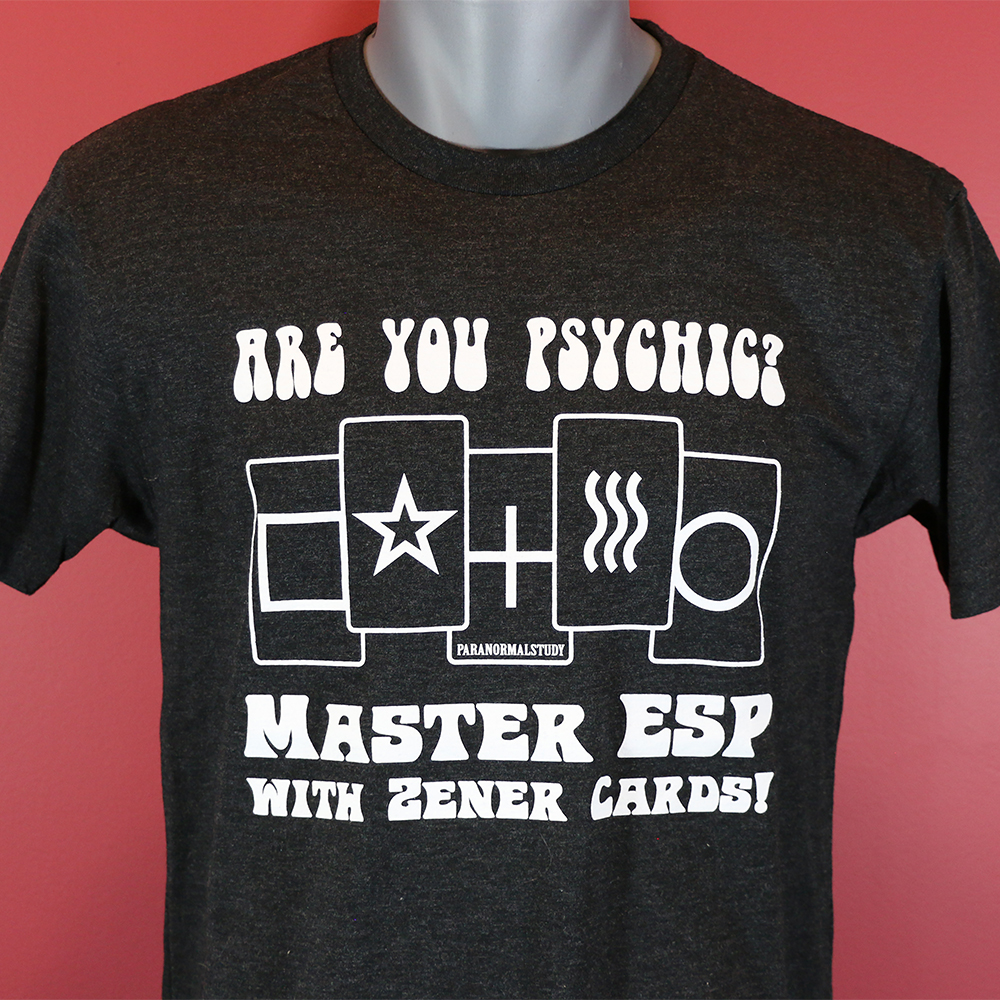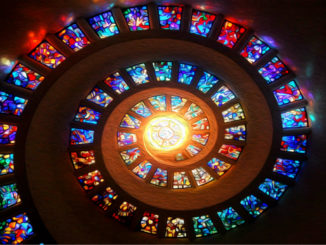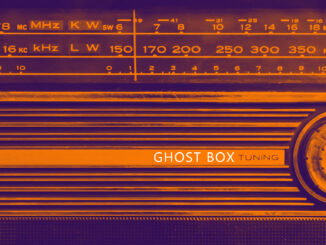
The Estes Method for using ghost boxes was first documented at Estes Park, Colorado (home of the Stanley Hotel) in January 2016. It was at this time, Karl Pfeiffer, Connor Randall, and Michelle Tate decided to implement a new experiment while using an SB-7 ghost box: double-blind monitoring. Recently, due to ample media coverage, the Estes Method has become an experiment that is being utilized throughout the paranormal field.
Before we go further, in case you are not aware of what blind experimentation is, here is a basic explanation:
BLINDED EXPERIMENT
“A blind or blinded-experiment is an experiment in which information about the test is masked from the participant, to reduce or eliminate bias, until after a trial outcome is known. It is understood that bias may be intentional or subconscious, thus no dishonesty is implied by blinding.”
– Wikipedia
The process
Pfeiffer et al. took the definition of a double-blind experiment quite literally and blinded the ghost box user from both outside noise and visual stimulation.
While experimenting with the Estes Method, a ghost box user utilizes a ghost box with no sensory input other than the auditory ghost box live feed. The user will have a pair of headphones plugged into the ghost box and will either close their eyes or preferably wear a blindfold while a third-party investigator will ask questions. The ghost box user should not be able to hear the questions being asked by the third-party investigator. The job of the ghost box user is to simply repeat verbally what they hear through the box alone in a loud, audible fashion for the third-party monitor(s) and any other investigators in the room.
The Estes Method has been heralded as a revolutionary new way to utilize ghost boxes. It has been featured on paranormal television shows and the recent docu-series Hellier. The producers and principal investigators of Hellier proclaimed it “Groundbreaking.”
A quick note from the author
For those unfamiliar with my work, my name is Tim Woolworth. I have been writing and experimenting with ghost box communication for over a decade. My site ITC Voices is a site dedicated to ghost box communication and it has been online since April, 2010. I have written more ghost box theory than anyone. I have assigned classification-types to ghost box communication that are used throughout the field. I have spoken on the topic of ghost box communication to thousands of people over the years through events and lectures. My site content has been read by hundreds of thousands of visitors.
In short, I am very well-placed to critique the Estes Method for ghost box communication. With this in mind, I am going to offer my experiential opinions on how the Estes Method, as currently conducted, negatively impacts ghost box communication sessions.
Pre-Estes Method blind experiments
First, the Estes Method is not unique to Pfeiffer et al. It was not first utilized at Estes Park in 2016. In fact, it had been used several years earlier and published about.
The first known publication on the Estes Method was in a book by authors Daniel Morgan and Shawn Taylor entitled The Double-Blind Ghost Box: Scientific Methods, Examples and Transcripts in 2013. While this book is generally unremarkable, it did introduce the concept of double-blind ghost box monitoring years before an iteration of the technique became known as the Estes Method.
The Morgan and Taylor method is quite similar to the Estes Method:
- The ghost box output is plugged into the input of a recorder
- The recorder headphone output is monitored by the ghost box listener
- A single questioner asks questions
- The ghost box listener states aloud recognizable phrases s/he hears through the headphones
- The questioner records just the questions and the words uttered by the ghost box listener

Most importantly, in the Morgan and Taylor method of double-blind ghost box experimentation, the output of the ghost box is physically recorded as well as monitored.
An analysis of the Estes Method
Ghost box communication is a form of ITC, an acronym for Instrumental Transcommunication.
Instrumental Transcommunication is a term that was coined by the physicist Ernst Senkowski as an umbrella term for the various forms of anomalous communication that have been received.
I have worked to refine the definition of ITC over the last decade into a succinct sentence through working with colleagues, reading, experimentation, thought, writing and research. My current working, published definition of ITC is:
INSTRUMENTAL TRANSCOMMUNICATION USES INDEPENDENT THIRD PARTY INSTRUMENTS IN ORDER TO FACILITATE RECORDABLE AND REVIEWABLE COMMUNICATION WITH DISCARNATE CONSCIOUSNESS OF AN UNKNOWN ORIGIN.
There are a few key parts of this definition, but for the purposes of this article and Estes Method analysis, the part about using an independent third-party instrument to record is critical. Without recording the output of the ghost box used via Estes Method, then the ghost box is no longer valid as a research tool and cannot be considered evidential.

T-Shirts, Mugs and More!
We now have t-shirts, tarot decks, ESP cards, coffee mugs, face masks, and much more merchandise available for purchase. Every dollar spent helps fund Paranormal Study!
The Estes Method only records the verbal output of the ghost box user. This is simply not instrumental transcommunication. If only the listener output is recorded, the necessity of having an independent instrument recording the the session is removed. If the original ghost box audio is not recorded, as part of the definition, then there is nothing reviewable.
In short, the Estes Method is tantamount to live listening during an Electronic Voice Phenomenon (EVP) session and only recording what you think you hear without actually utilizing the recording itself to verify the communication. To put it quite bluntly, the Estes Method, as currently outlined, is a disservice to ghost boxes and more importantly, it reduces a ghost box from being a valuable tool for instrumental transcommunication to becoming simply one listener’s opinion in real-time.
A note about conducting ghost box sessions: isolation
Even the best ghost box listener, whether it be in a group setting or during a solo session, can only pull an estimated maximum 20% (depending upon the box type) of the communication in real time. Anyone who is serious about ghost box communication knows that the bulk of the information from a session comes from painstaking review of every second recorded. There are several types of ghost box communications that we need to monitor for and sometimes the communication has multiple communications layered on top of one another.
It takes years of listener training just to be able to parse phrases and sentences from the background noise and radio static in real time. In order to facilitate this, headphones can help. I wore them for years during sessions (long before the Estes Method or the Morgan and Taylor Method), but over the last few years I have moved away from audio isolation as others have moved towards it.
When you isolate yourself, you isolate yourself from every other stimulus in the room. In ITC, we realize that ambient noise can be transformed into communication via the Transform Hypothesis. It is the bedrock of EVP and of ghost box communication. When you isolate yourself, you are removing the room noise which may create further communication.
I embrace that noise because I have found through experimentation that room EVP can ride upon a ghost box output and is often recorded quite clearly. In order to facilitate this, I utilize a very loud external PA speaker during my sessions and it has helped with EVP formation. I am of the firm opinion that this set-up also helped foment the few instances of disembodied voice phenomenon during ghost box sessions where a disembodied voice was audible to those present in the room at the time.
A note about conducting ghost box sessions: group settings
In a group setting, there is a lot more going on than just a single listener monitoring a session. A group can be your paranormal team, or a crowd of listeners at an event. In these settings, every person present has set of ears additional to that of the ghost box user.
And those additional ears can prove invaluable.
One of the more popular misconceptions about using a ghost box is that it puts you in touch with spirits present at that location where the ghost box is being used. Thinking like this completely limits the lens under which you are viewing your ghost box session.
Senkowski often referenced the term “contact field.” In short, a contact field is an ever-growing group of contacts through your ITC devices. With the advent of ITC in field work, your contact field grows rapidly. Every contact you reach becomes part of your contact field; deceased friends and loved ones become part of your contact fields, any Technicians you may have via ITC become part of your contact field. You may even add to your contact field by becoming a person of interest to a discarnate consciousness while walking through a grocery store.
Simply put, you can never know who, or what, is communicating with you at any given time through ITC because you cannot know if the voice derives from your contact field, the location or even a living person. Obviously, names can be given, voices can be recognized, but we still cannot ascribe what these voices are other than disincarnate consciousness of an unknown origin.
In a crowd, every person there will have their own contact field. When you remove isolation from a ghost box session, you will be able to listen to the crowd. As mentioned before, only a minimal fraction of communication is picked up by the ghost box user in real-time which means that a lot of communication is missed. So, if a name, or a phrase comes through during the ghost box session that is meaningful to someone else in the room, then the opportunity for questioning along those lines is completely lost when the listener is in isolation. It is important to consider what others hear during a session because it can lead to breakthroughs that would’ve otherwise been missed.
In conclusion
Ghost box communication is not for every paranormal investigator. There are many critics and a host believe it is detrimental to field investigation. That is perfectly acceptable in our niche because the entire paranormal field has critics worldwide.
Like any other paranormal tool, if you are to utilize a ghost box during field work or private research, you are best served to know a bit about how to receive the best ghost box communication you can. You’ll want to operate near windows, not use them in basements, and certainly don’t use AM boxes past ten PM due to possible clear-channel station false positives. Among a host of other things, these are little steps that can ensure the integrity of your session. Integrity is key to everything we do in this field.
The Estes Method does not currently ensure the integrity of a ghost box session due to not recording the original ghost box source. This can be easily rectified through the original double-blind ghost box technique as described by Morgan and Taylor.
One of the criticisms of Morgan and Taylor could be that the headphone output of the recorder is not loud enough to block out other sounds in the room. This is a valid concern if you are to conduct the experiment justly. Pfeiffer et al. recommend using noise canceling headphones to block out stray sound. There are inexpensive portable headphone amps that can drive the volume needed to block out stray sounds; simply plug the output of your recorder into a headphone amp input and then plug your noise canceling headphones into the amp output. There will be more than enough signal generated for your isolation headphone driver diaphragms.
When experimenting with the Estes Method or the Morgan and Taylor method, isolation is key. Isolation will limit your sensory input. As explained above, isolation will ultimately limit the quality of the session in real-time. If done correctly, review of the ghost box audio via the recording will help to fill in the listener gaps experienced during isolation.
Instrumental Transcommunication is a very serious field in paranormal research. You may not be aware of this, but even EVP is a form of ITC. The Estes Method, as currently laid out by Pfeiffer et al., is not a form of ITC. Simply recording the output of the ghost box will make it viable for ITC research and doing such will strengthen the potential of the Estes Method as an experimental tool.
I applaud Pfeiffer et al. for drawing attention to the ghost box as a viable investigation tool. Ghost box use has been growing since 2002 when it was first invented by Frank Sumption.
Frank taught me a valuable lesson many years ago. He told me I was asking too many questions of the communicators through the box. He was right, I was often talking over communications. In Frank’s words, “Shut the f*ck up and listen.”
That is the lesson I’ve taken to heart. Just listen and occasionally interact. The ITC voices will still communicate and impart information. If they want you to pay attention, they will let you know. Interaction is important as it is the only way to follow up on the information that is imparted through your box.
But, if you primarily just shut up and listen instead of asking question after question, then isolation in any form, be it the Estes Method or the Morgan and Taylor method, is simply not necessary.
Did You Learn Something New?
If you found the content in this article to be of any value to your paranormal studies, please let us know in the comments below. Feel free to share this article with your friends as well!
If you would like to receive occasional email updates about new articles like this one, library additions and monthly news round-ups, you can sign up for our Paranormal Insider mailing list.




Excellent information and great advice. Very well written.
I found your article to be very educational. Thank you for sharing your experience of ITC.
Thank you for taking the time to read the article and reply. It is appreciated.
Tim, anyway to get a PDF copy of this article?
I sent it over to your email Ed. Cheers.
Tim, thanks for the informative article. I am still new to using my S-Box. I like it because it can records automatically. I do have a question about using it. I use AM stations because I thought there would be less interference then FM. Is that not true? I read where you said not to use it after 10pm. I feel like FM is more crowded with stations. Thank you.
Thank you for taking the time to read the article!
The reasoning behind this is a whole article unto itself. Past 10pm in the US, AM radio can buy additional bandwidth meaning that it broadcasts on several successive channels. When this happens, you can pick up full sentences that may be viewed as false positives. FM does not utilize this feature, meaning every channel is discrete. Therefore if you pick up a communication that is meaningful, or is in a voice that exceeds more than a few words, the chances are higher that it is a genuine communication.
While I do not disagree with the content of this article, I do find that it misses the point of the Estes Method. The Estes Method is not true ITC. The isolation portion of the method (audio and visual) allows the rhythmic static of the radio sweep to aid the user into a semi-trance-like state. This trance-like state allows the user to ‘hear’ more than what the average unisolated user would hear and removes the confirmation bias that you allow within a group setting.
The reason why recording an Estes Method session does not prove or disprove any of the communication is that the communication is not solely based on the ‘words’ that come from the Ghost Box.
By limiting the Estes Method to ITC standards and proclaiming it “a disservice to ghost boxes” and stating that it “reduces a ghost box from being a valuable tool for instrumental transcommunication to becoming simply one listener’s opinion in real-time.”, one has missed the point of the isolation portion of the method and hand cuffs an entire section of paranormal technology to a single application. Let’s not forget that Frank Sumption’s original concept for sweeping radio communication came from and was intended for communication with ultra-terrestrial entities and I dare say that you have missed the point of “Shut the f*ck up and listen.”
Furthermore, The Estes Method is not exclusive to any input device, as this method has been used with similar reliability on The SB-7 and Frank’s Box, as well as more recent experiments with Software-defined radio utilizing sweep plug-ins.
With respect,
Brian Peyatt
Thanks for the great article! I am new to this field and try to gather some theories. I have seen a bunch of people using the Estes Method with a spirit box. My question is: does it have to be a device which sweeps through radio or can use also a static white noise generator (e.g. as an app on the phone) ?
Thanks for any hint!